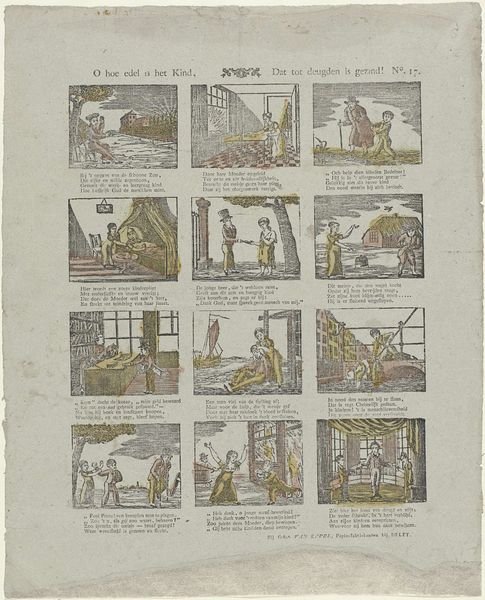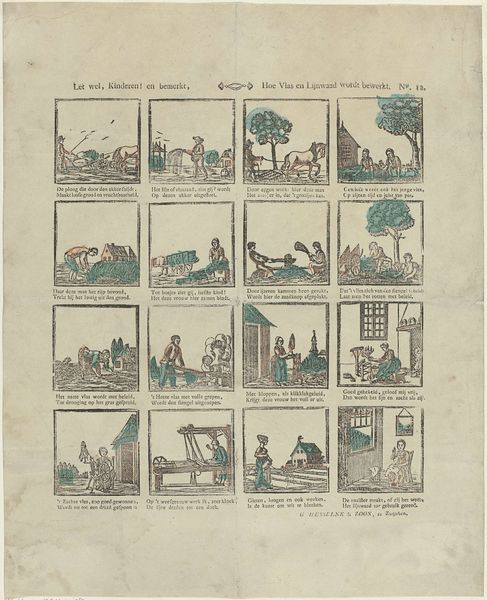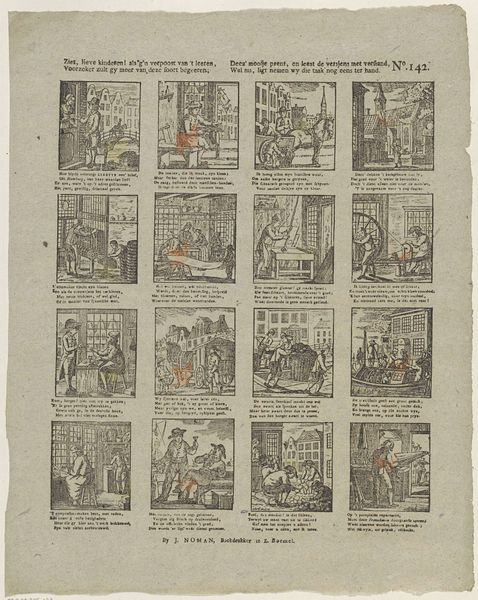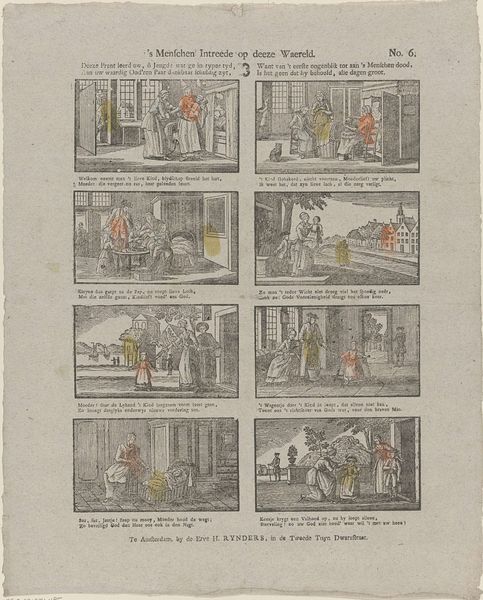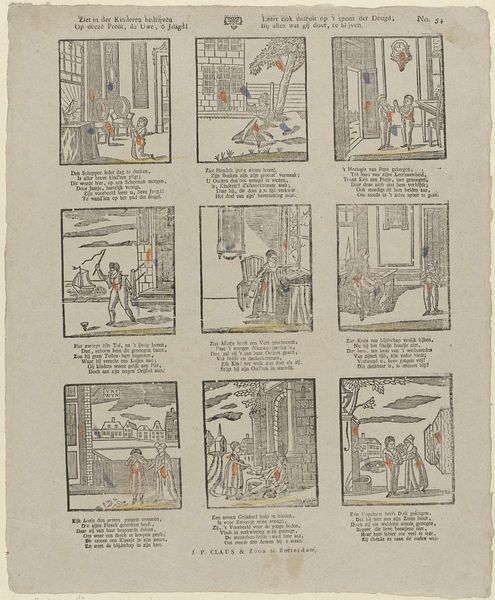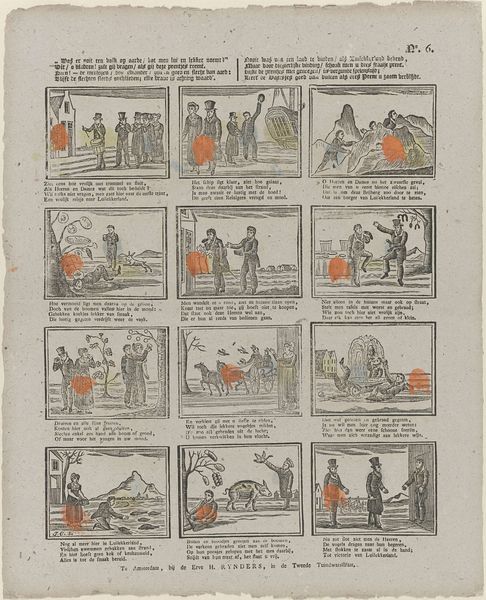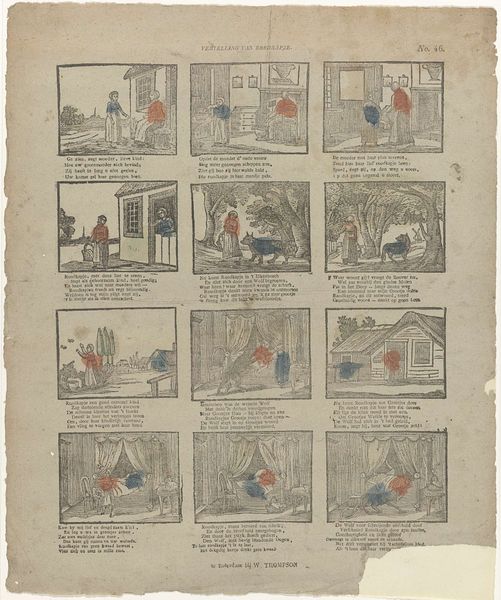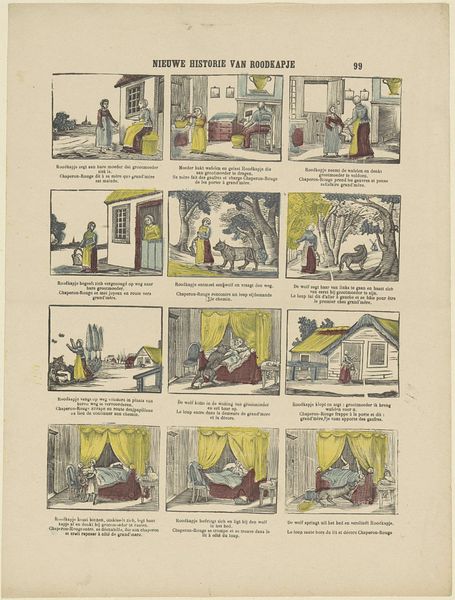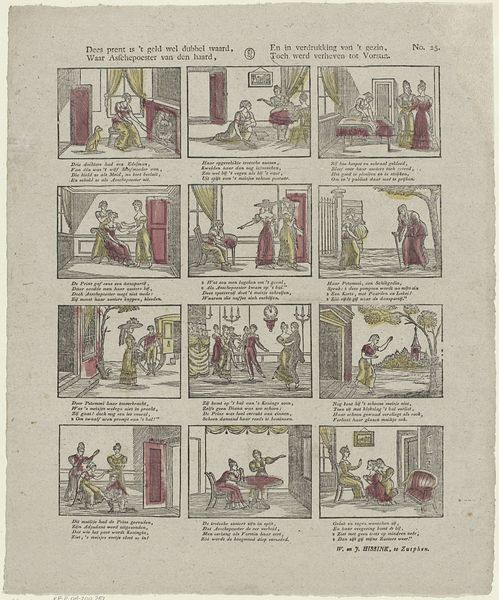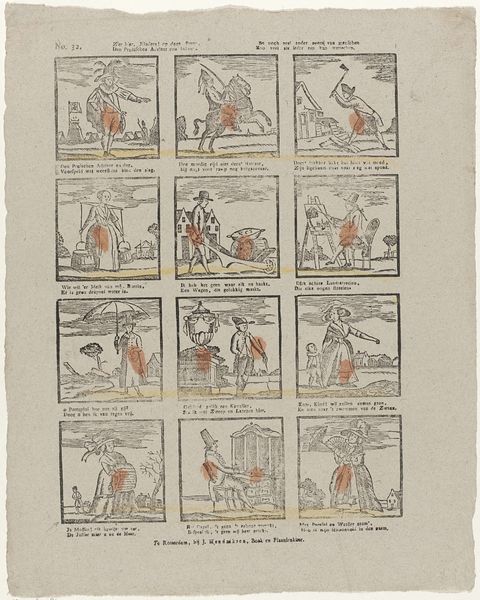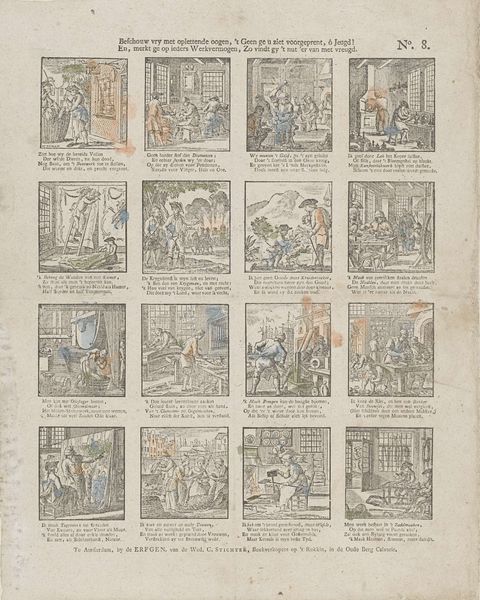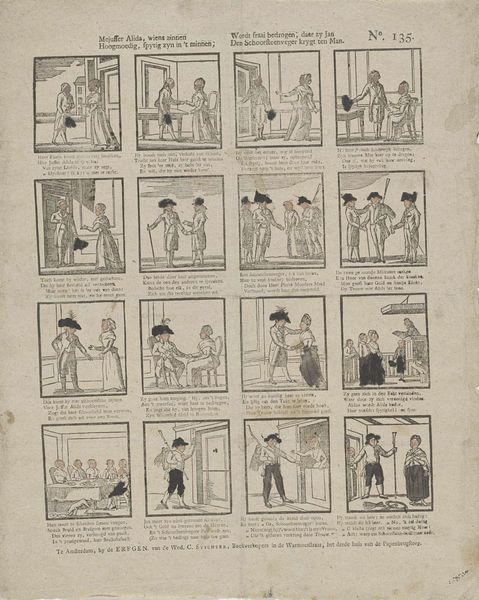
Let wel, kinderen! en bemerkt, / Hoe vlas en lijnwaad wordt bewerkt 1820 - 1838
0:00
0:00
print, weaving, woodcut
#
comic strip sketch
#
narrative-art
# print
#
weaving
#
figuration
#
folk-art
#
pen-ink sketch
#
woodcut
#
line
#
genre-painting
Dimensions: height 423 mm, width 332 mm
Copyright: Rijks Museum: Open Domain
Editor: Here we have a print titled "Let wel, kinderen! en bemerkt, / Hoe vlas en lijnwaad wordt bewerkt," created sometime between 1820 and 1838 by Christiaan Jacob Schuyling. It shows a sequence of images depicting the production of linen. I am intrigued by the raw quality of the woodcut and how it visually narrates the stages of labor. How do you interpret this work, especially concerning its focus on flax and linen? Curator: This piece screams material process. We're not just looking at an image; we're viewing a diagram of production. Consider how flax transforms – from field to thread to cloth. Each frame showcases a distinct step in labor. The woodcut itself underscores materiality, offering a direct and slightly crude aesthetic – nothing highbrow. Think about the targeted audience: were these prints meant to instruct, entertain, or perhaps both? Editor: That’s interesting! So, the value lies not just in the final product (the linen) but also in making visible the processes often hidden from view? Curator: Exactly. Notice how it breaks down the traditional hierarchy between artist and artisan. Schuyling, as the creator, is intimately involved in representing not art, but the means of making something utilitarian. How does the text interplay with the images, do you think? Does the combination suggest a didactic purpose? Editor: I think the short versus create a sense of rhythm. I see that this piece not only visually explains the labor involved, it creates an accessible artwork. It is amazing how such a simple print is really highlighting production, materials and labor through art. Curator: And therein lies its potency! Recognizing the material reality behind objects changes our perspective. That print, while seemingly simple, offers insight into societal values, labor practices, and even early forms of visual education.
Comments
No comments
Be the first to comment and join the conversation on the ultimate creative platform.
